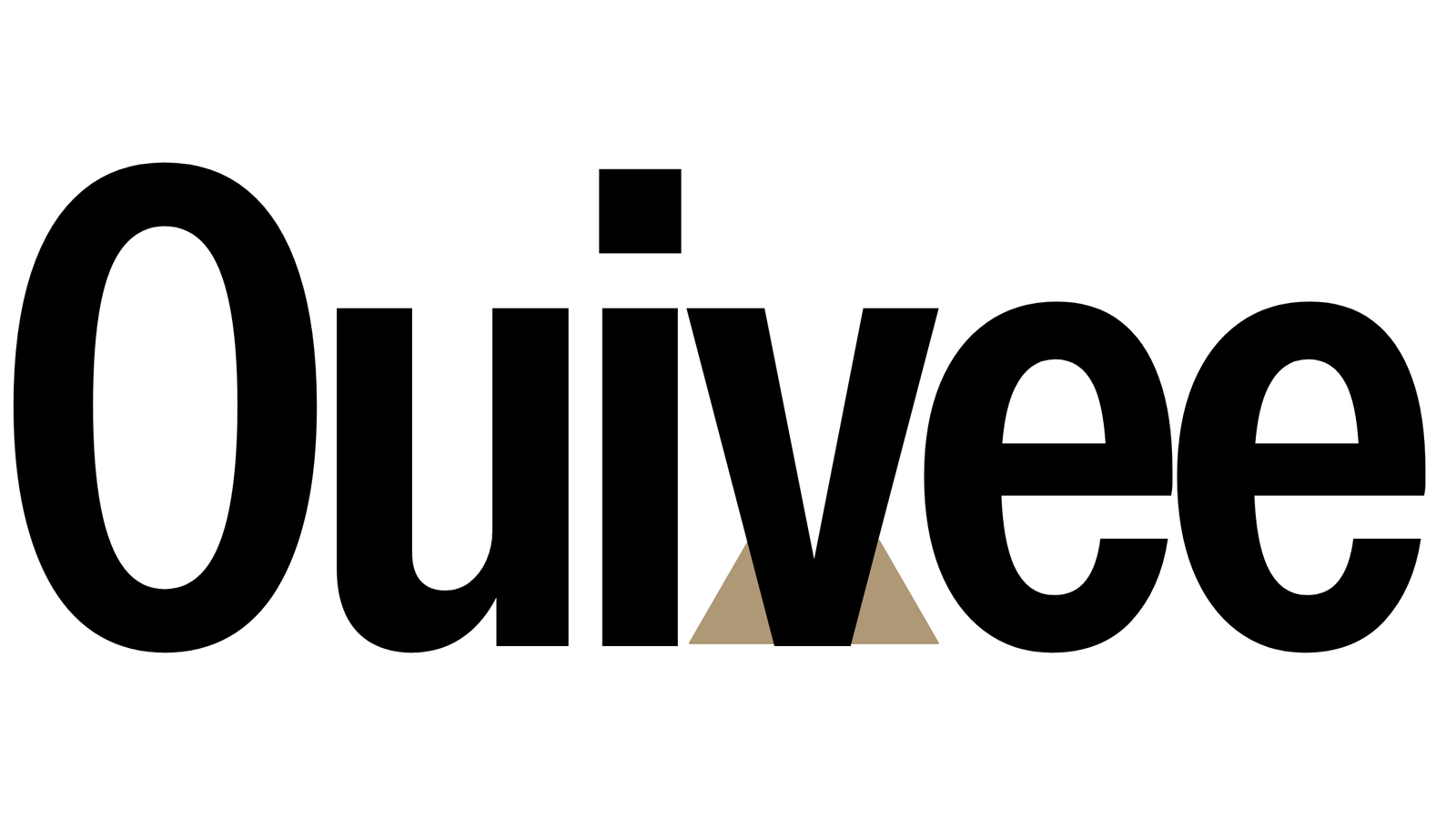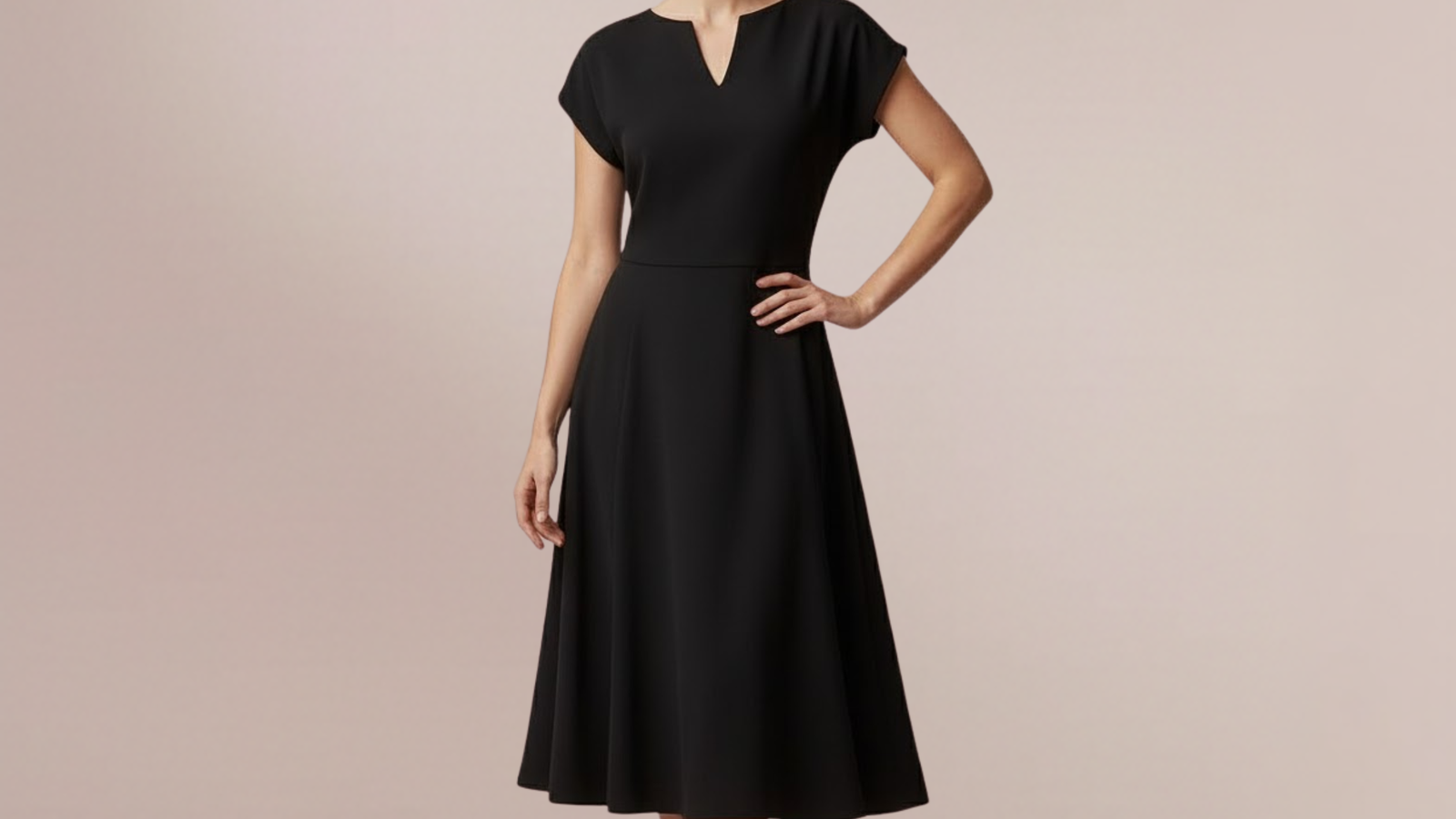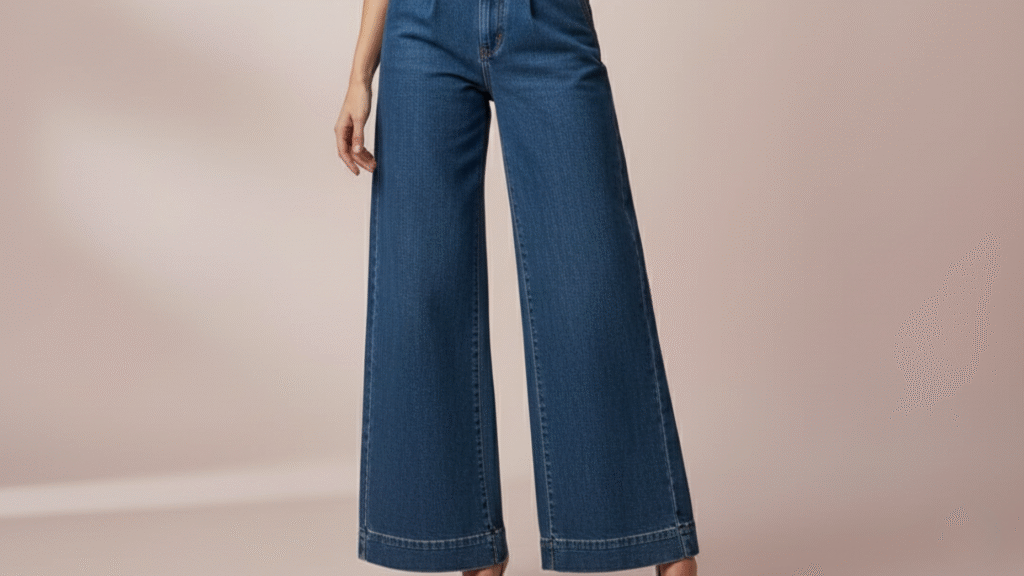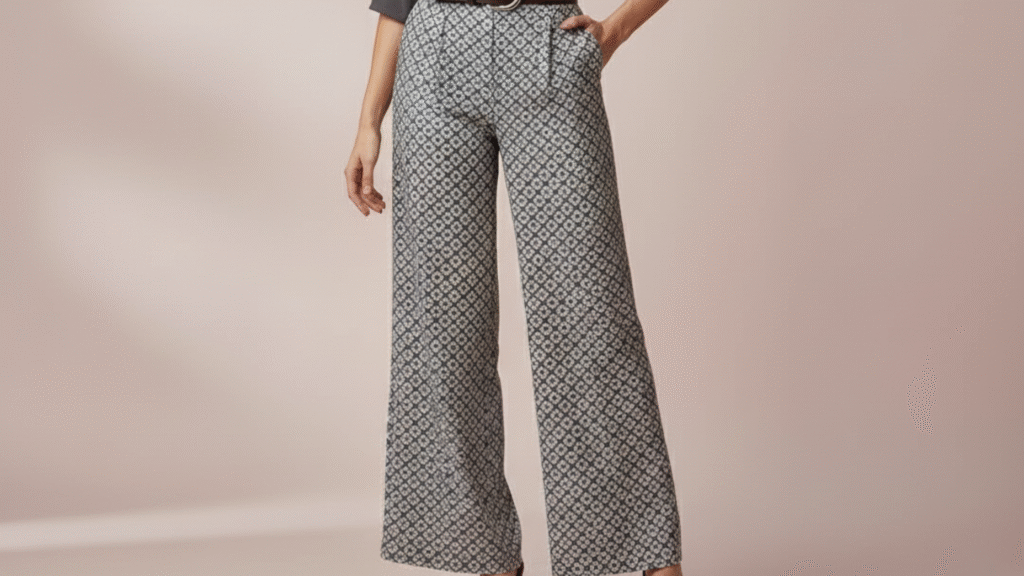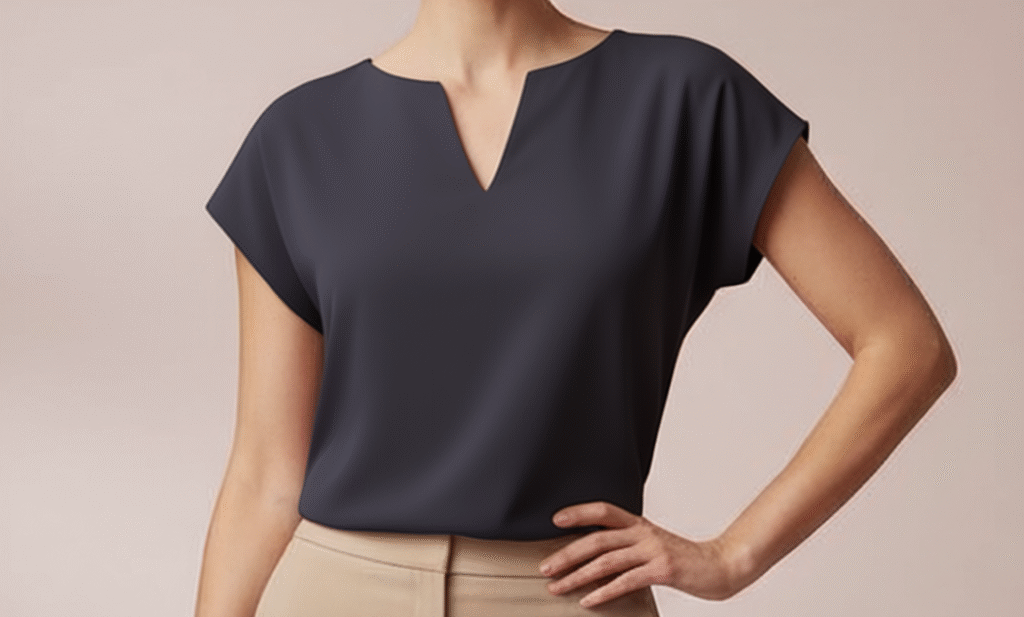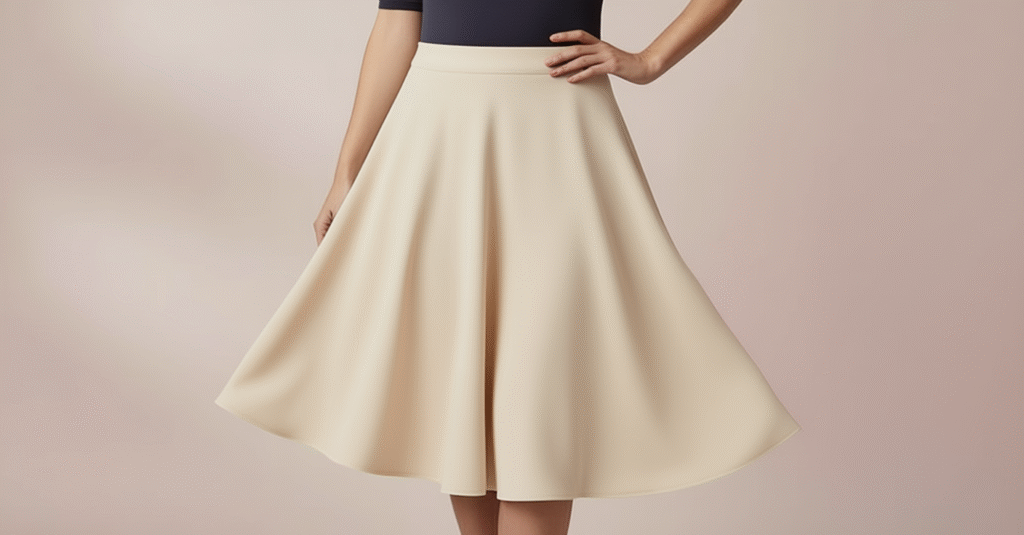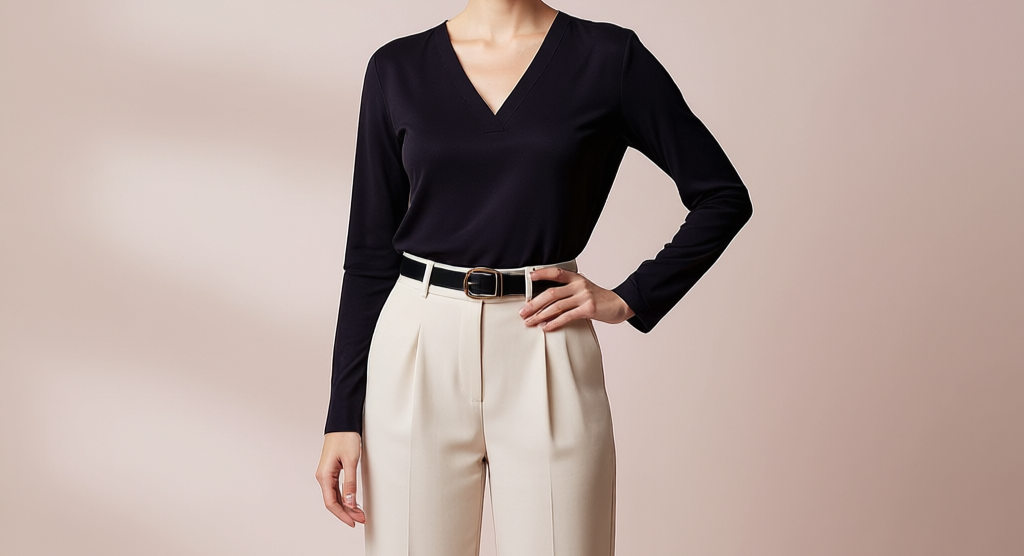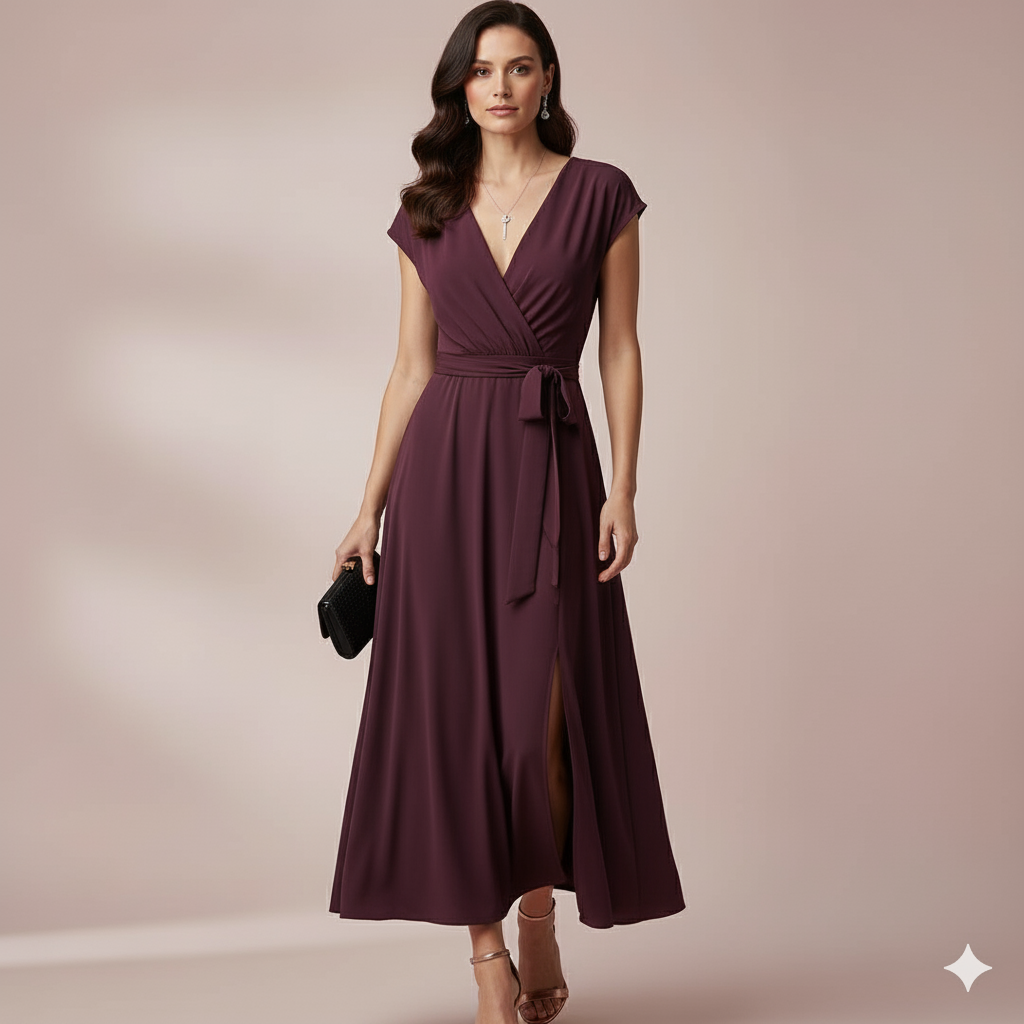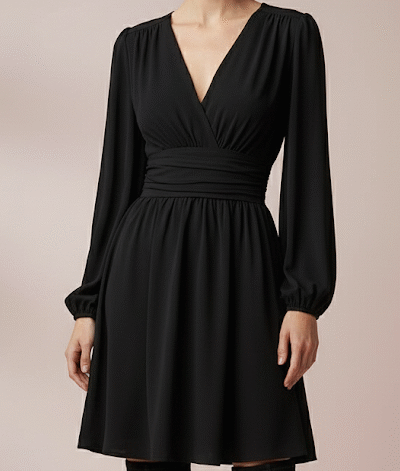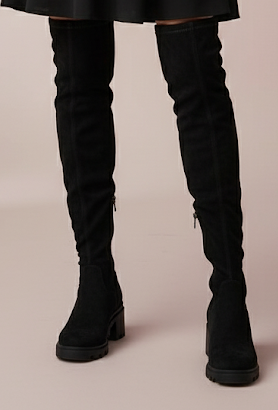Getting dressed isn’t just about following trends—it’s about understanding your body and knowing what makes you feel confident and at ease.
Every shape tells its own story, and among the most common—hourglass, pear, rectangle, and apple—the inverted triangle stands out with its striking, athletic silhouette.
In this article, we’ll take a closer look at what defines this body shape, explore why some dress styles highlight its strengths better than others, and share practical tips to help you choose pieces that bring balance and elegance to your look.
How to identify an inverted triangle body shape
An inverted triangle body shape—sometimes referred to as a “V-shape” or “top-heavy” figure—is characterized by broader shoulders and/or a fuller bust that tapers down to a narrower waist and hips.
Typically, the shoulders are at least 2 inches wider than the hips, and the waist may or may not be well-defined. Celebrities like Naomi Campbell, Cameron Diaz, and Keira Knightley are often cited as examples of this body type.
The goal when dressing an inverted triangle shape isn’t to hide your natural proportions but to create visual balance. Since the upper body naturally draws attention, the focus of styling is often on softening the shoulders and adding volume or interest to the lower half to achieve harmony.
Key styling principles for inverted triangle figures
Before diving into specific dress recommendations, it’s helpful to understand the underlying principles that guide effective styling for this body type:
- Minimize volume on top: avoid elements that add bulk or draw excessive attention to the shoulders, bust, or upper back.
- Add visual weight below the waist: use color, pattern, texture, or silhouette to create fullness or interest in the hips and legs.
- Emphasize the waist: even if your waist isn’t dramatically cinched, defining it helps transition the eye from top to bottom more smoothly.
- Opt for clean lines on top: simplicity in necklines and sleeve styles often works better than elaborate details.
With these principles in mind, let’s examine specific dress styles that align well with the inverted triangle silhouette.
1. A-line dresses
Why they work: A-line dresses flare gently from the waist down, gradually widening toward the hem. This shape counterbalances broader shoulders by adding subtle volume to the lower half without overwhelming the frame.
What to look for: choose A-line dresses with a defined waist—either through seaming, a belt, or cut—to anchor the silhouette. Avoid styles with excessive ruffles or puff sleeves on top, which can exaggerate shoulder width.
Real-world example: a classic wrap dress in an A-line cut, such as those popularized by Diane von Fürstenberg, works exceptionally well. The wrap design naturally nips in at the waist, while the skirt flows outward, creating a balanced hourglass illusion.
2. Fit-and-flare dresses
Why they work: similar to A-line but with more pronounced volume in the skirt, fit-and-flare dresses (also known as skater or circle dresses) add noticeable fullness below the waist. This contrast helps offset a strong upper body.
What to look for: ensure the bodice fits snugly without pulling across the bust. Look for dresses with minimal detailing on the top—solid colors or small-scale prints work better than bold shoulder accents.
Real-world example: a 1950s-inspired fit-and-flare dress in a dark solid color on top with a subtle floral print on the skirt draws the eye downward while maintaining elegance. Think of vintage-inspired styles from brands like ModCloth or Reformation.
3. Empire waist dresses
Why they can work: empire waist dresses sit just below the bust and flow loosely over the body. While they can sometimes emphasize the bust area, they can be flattering if chosen carefully.
What to look for: opt for empire waist dresses with soft, flowing fabrics and minimal structure in the bodice. Avoid stiff materials that puff out around the chest. Pair with a long pendant necklace to elongate the torso and shift focus downward.
Real-world example: an empire dress in lightweight jersey can be surprisingly flattering for those with a fuller bust, as long as the skirt has enough movement to balance the top.
4. Shirt dresses with belts
Why they work: shirt dresses offer a relaxed, tailored look. When cinched at the waist with a belt, they create definition and allow the skirt to fall open, adding lower-body volume.
What to look for: choose versions without shoulder pads or epaulets, which can widen the shoulders further. Roll up the sleeves slightly to keep the look casual and avoid drawing attention upward.
Real-world example: a denim shirt dress belted at the natural waist, paired with ankle boots, creates a grounded, proportional look. The vertical lines of the button placket also help elongate the torso.
5. Column or sheath dresses with strategic details
Why they work: while bodycon or sheath dresses might seem risky for inverted triangles, they can be effective if they include design elements that redirect attention.
What to look for: look for sheath dresses with embellishments on the hips (like pockets, seams, or asymmetrical draping), or those that feature color-blocking with darker tones on top and lighter or brighter hues below.
Real-world example: a black sheath dress with a single bold-colored panel along one hip draws the eye laterally and downward, creating visual interest where it’s needed most.
Dress styles to approach with caution
Not all dresses are created equal for the inverted triangle shape. Some styles can unintentionally exaggerate the imbalance:
- Off-the-shoulder or boatneck dresses: these highlight the shoulder line and can make it appear even broader.
- Halter necks: while sometimes flattering for toned arms, halter styles concentrate attention at the shoulders and upper chest.
- Dresses with heavy embellishment on top: sequins, ruffles, or large collars above the bust add unwanted volume.
- Straight shift dresses: without waist definition or lower-body volume, they can make the figure appear boxy and top-heavy.
That said, fashion is personal. If you love a particular style, consider tailoring or accessorizing to rebalance it—such as pairing a boatneck dress with wide-leg trousers underneath (for a dress-over-pants look) or adding a statement belt to create waist emphasis.
The role of fabric and pattern
Beyond cut and silhouette, fabric choice and pattern placement significantly influence how a dress interacts with your shape.
- Fabrics: lightweight, drapey materials like silk, rayon, or soft cotton tend to skim the body without adding bulk. Stiff fabrics like taffeta or structured cotton can puff out at the bust or shoulders, which may not be ideal.
- Patterns: vertical stripes can elongate the torso, while small prints on top and larger prints on the bottom help shift visual weight downward. Avoid large, bold patterns on the upper half.
Final thoughts: confidence over rules
While understanding your body shape can be a useful styling tool, it shouldn’t dictate rigid rules. Many women fall between categories or experience changes in their proportions over time due to age, fitness, or life events. The inverted triangle guidelines are meant to offer a starting point—not a limitation.
Ultimately, the best dress is one that makes you feel confident, comfortable, and like yourself. Use these suggestions as a framework, but don’t hesitate to experiment. Try on different styles, take photos to compare proportions objectively, and pay attention to how a dress makes you feel—not just how it looks.
